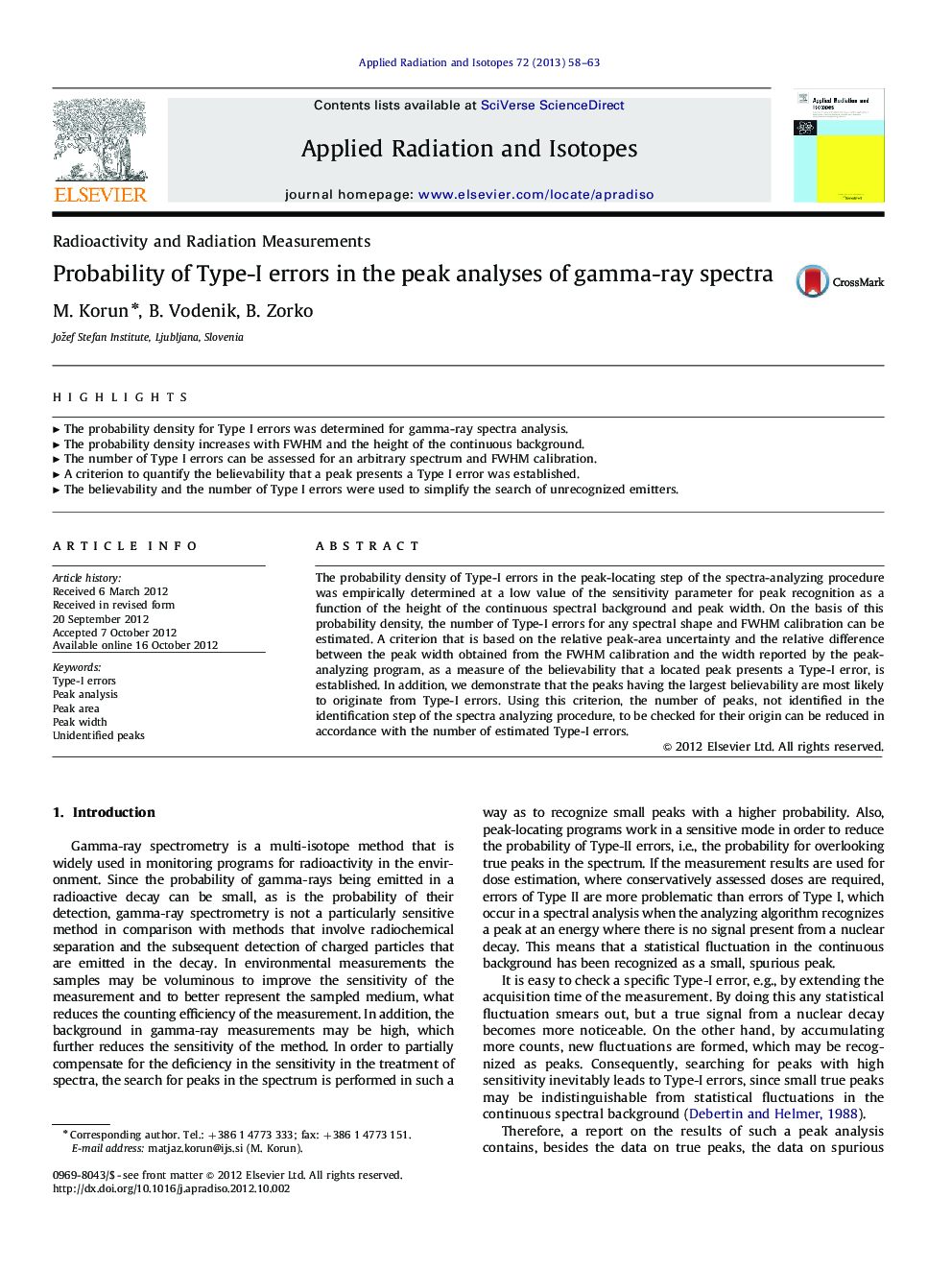| Article ID | Journal | Published Year | Pages | File Type |
|---|---|---|---|---|
| 1876213 | Applied Radiation and Isotopes | 2013 | 6 Pages |
The probability density of Type-I errors in the peak-locating step of the spectra-analyzing procedure was empirically determined at a low value of the sensitivity parameter for peak recognition as a function of the height of the continuous spectral background and peak width. On the basis of this probability density, the number of Type-I errors for any spectral shape and FWHM calibration can be estimated. A criterion that is based on the relative peak-area uncertainty and the relative difference between the peak width obtained from the FWHM calibration and the width reported by the peak-analyzing program, as a measure of the believability that a located peak presents a Type-I error, is established. In addition, we demonstrate that the peaks having the largest believability are most likely to originate from Type-I errors. Using this criterion, the number of peaks, not identified in the identification step of the spectra analyzing procedure, to be checked for their origin can be reduced in accordance with the number of estimated Type-I errors.
► The probability density for Type I errors was determined for gamma-ray spectra analysis. ► The probability density increases with FWHM and the height of the continuous background. ► The number of Type I errors can be assessed for an arbitrary spectrum and FWHM calibration. ► A criterion to quantify the believability that a peak presents a Type I error was established. ► The believability and the number of Type I errors were used to simplify the search of unrecognized emitters.
